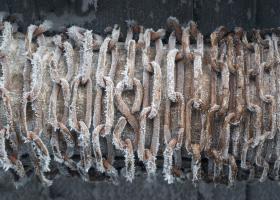Be careful of the words you say

In the below summary of a small claims court case it becomes evident that one needs to take cognisance of what words one uses, as the wrong words, information and or description can come back to bit you.
Honesty and transparency is always the best policy when it comes to property. In this case the house was advertised that it had been “stripped to the bare bones” before it was renovated, when in fact the seller did not do this in the basement, otherwise he would have become aware of the leak in the wall that was crudely plugged, he had “rather just insulated and dry walled the area in front of the existing plaster” thus not becoming aware of the leak.
If you wouldn't write it and sign it, don't say it. - Earl Wilson
If the seller had been specific in regards to exactly what renovations had been done in the basement, plus the fact that the home inspector had made the buyer aware of the potential of a leak, it is unlikely that the judge would have made the seller pay for 50% of the damages.
Thus despite the home inspector making the purchaser aware of the potential leak, the judge held that the seller was 50% responsible for the damages. The purchaser also had a duty to mitigate, when she was advised of the potential problem by the home inspector and also became aware of the musty odour.
When the court valuates damages, it also applies a duty to take all reasonable steps (by the person claiming damages) to mitigate.
The below summary of the facts and decision is by Karina Frost from Frost Law:
The Facts:
In September 2009, The defendant, Hussain Al-Saffar (“Hussain”), purchased a property for $439,000.00 in Toronto, Ontario. When Hussain purchased the property, the basement was unfinished and was sold to him “as is”.
Hussain obtained the relevant permits and hired contractors to extensively renovate the property.
Of importance to this case, Hussain completely finished the basement, including drywall and carpeting, with the exception of the furnace room area where the interior foundation wall remained exposed and visible. Included in the description of the attributes of the Property were words that the house was “gutted to the bare bone(s)”, which became the focal point of this case.
Although Hussain oversaw the renovations, he never in fact lived in the Property. Hussain subsequently put the house on the market.
When the plaintiffs, Clare Angela Mauro and Anne Delores Mauro (“Mauro’s”), signed an agreement of purchase and sale to purchase the property from Hussain on or around August 18, 2010 in the amount of $658,000.00. The Mauro’s had an inspection performed on the property. The report alerted the plaintiffs to potential leakage problems with the basement, including that it was unpredictable and should be monitored. The closing took place September 3, 2010.
Almost immediately after taking possession of the property, the Mauro’s smelled must and dampness in the carpet at the foot of the stairs over a period of several months. No investigation was undertaken behind the drywall at that point because she did not think that the observed conditions were related to the foundation walls and they did not wish to disturb or unnecessarily damage the existing finishes.
On or about September 25, 2011, more than one year after they took possession of the Property, the plaintiffs experienced a flood in the basement and, as a result, incurred the cost associated with fixing the damage, most of which was covered by insurance. Following an investigation by the clean-up crew sent by the plaintiffs’ insurer, it was discovered that the north foundation wall of the basement leaked water. In addition, they found cracks in the mortar between the cinder blocks, including one crack that appeared to have been crudely plugged with a piece of wood to stop the flow of water.
The Mauro’s claimed Hussain must have known about it if he gutted the basement to the bare bones, as he claimed. Hussain claimed that he had not seen any leaks and did not notice the piece of wood because he did not strip the basement walls to the cinder blocks, but rather just insulated and dry walled the area in front of the existing plaster.
The Decision
This case was heard at the Toronto Small Claims Court. The plaintiffs claimed $8,659.00 for damages in repairing a leaky basement wall, including damp proofing, treatment for mold, and content removal and replacement in the property purchased from the defendants, in addition to $1,000.00 in punitive damages.
The question was whether the words “gutted to the bare bone(s)” misrepresentations.
Deputy Judge Prattas found that even though Hussain did not know the problem existed with the basement walls, he was still responsible to pay.
Since the defendant testified that he went only to the plaster, which I have accepted, then the defendant’s statements in the MLS Sheet and Sales Brochure were under the circumstances of this case untrue and inaccurate; they were made carelessly and negligently and misled the plaintiffs as to the true condition of the Property and more particularly the basement.
In my view (Karina Frost) the plaintiffs were misled into believing that they were getting a basement which did not have a latent defect with water leakage potential.
However, because of the warnings of the home inspector, Depute Judge Prattas held that the Mauro’s should assume part of the risk, since they chose not to do any further inspections.
Deputy Judge Prattas found Hussain 50% liable for the damages, or $4,329.50. No punitive damages were awarded.
The full case can be read on canlii.org













